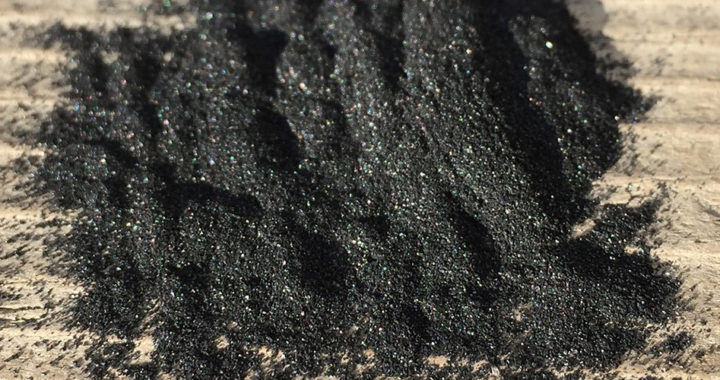An activated carbon or activated charcoal is a collective name for processed carbons with extremely porous structure and extensive surface area that allow them to effectively capture and hold materials, thus making them suitable for adsorption and chemical reaction.
The processing of carbon into an activated carbon generally involves the treatment of char with heat and oxygen or through the carbonization of carbonaceous materials permeated with dehydrating chemicals such as certain acids and bases.
Properties of Activated Carbon
Processing of char creates chemical reactions that rearrange its carbon atoms to form a large number of tiny pores, thus creating a huge surface area. Hence, the primary property of activated carbon is a high degree of microporosity that allows it to adsorb certain molecules.
It is also important to mention that a single gram of this form of carbon can have a surface area ranging from 500 to 1500 square meters. This large surface area due to microporosity makes it a highly adsorbent material.
Remember that adsorption is different from absorption. In chemistry, absorption means atoms, molecules, or ions entering or getting trapped inside something. A notable example is a water soaking into a tissue paper or a cloth.
On the other hand, adsorption involves atoms, molecules, or ions binding to the surface of another compound due to the mechanism of Van der Waals force. In other words, instead of entering inside the compound, they attach or adhere to the surface.
The Van der Waals force is a weak and short-range electrostatic attractive force between uncharged molecules. Activated carbon is highly adsorbent because its tiny pores promote or reinforce the Van der Waals interaction with another molecule.
However, it is important to note that the physical and chemical properties of a particular type of activated charcoal depends on the source material and the specific method employed in the production and processing of char.
Applications of Activated Charcoal
Activated carbon or activated charcoal is good at collecting molecules containing carbon because they are usually large enough and have enough electrons to have a strong Van der Waals interaction. It can also adsorb other molecules such as iodine, molasses, and tannins.
The adsorbent property of this form of carbon has brought forth numerous applications. Take note of the following:
• Air Filtration and Purification: Expansive applications of activated carbon to include filters in industrial facilities or as additives in consumer products to include facemasks, home purification systems, and odor neutralization products.
• Fuel Storage and Carbon Capturing: The microporosity and large surface area of activated carbon also make them a viable candidate for storing natural gas and hydrogen gas, as well as for carbon capture.
• Medicine and Healthcare: Primary medical application centers on removing several types of ingested poisons and treating overdosing from certain medications. Note that most poisons and drugs have carbon compounds.
• Personal Hygiene and Cosmetics: Manufacturers of skincare and personal care products such as soaps and toothpaste have included activated charcoal in their active ingredients to improve their cleansing efficiency.
• Water Purification and Treatment: Includes commercial and industrial applications to pull contaminants from water to make it available for human consumption or as part of wastewater treatment process and spill cleanups.
FURTHER READINGS AND REFERENCES
- Bubanale, S. and Shivashankar, M. 2017. “History, Method of Production, Structure, and Applications of Activated Carbon.” International Journal of Engineering Research & Technology. 6(6): 495-498. Available via PDF
- Rodríguez-Reinoso, F. 2001. “Activated Carbon and Adsorption.” Encyclopedia of Materials: Science and Technology. 2nd ed. DOI: 10.1016/B0-08-043152-6/00005-X





